Woolwich first came to prominence in the early 16th century when King Henry VIII established a dockyard here to build the Great Harry, the flagship of his new navy. This yard, where many famous ships were built, including the Sovereign of the Seas, for Charles I (in 1637), saw many royal visits and departures of voyages of exploration.
A framed drawing and text about The Great Harry.
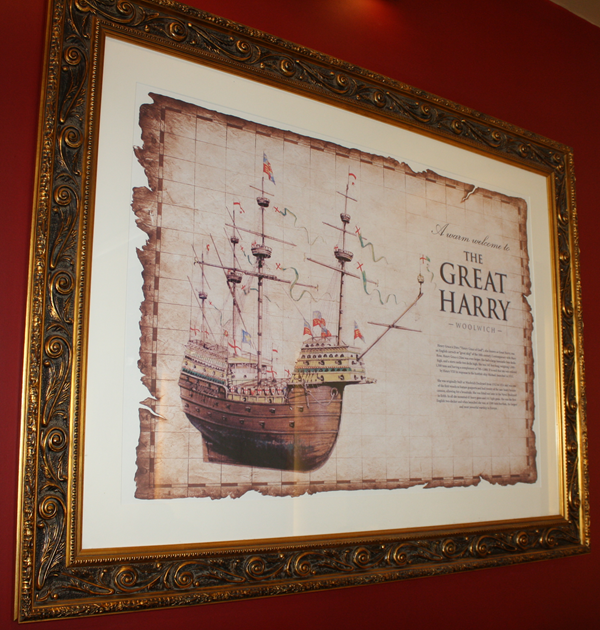
The text reads: Henry Grace a Dieu (“Henry Grace of God”), also known as Great Harry, was an English carrack or “great ship” of the 16th century. Contemporary with Mary Rose, Henry Grace a Diea was even larger. She had a large forecastle four decks high, and a stern castle two decks high. She was 165 feet long, weighing 1,000-1,500 tons and having a complement of 700-1,000. It is said that she was ordered by Henry VIII in response to the Scottish ship Michael, launched in 1511.
She was originally built at Woolwich Dockyard from 1512 to 1514 and was one of the first vessels to feature gun ports and had twenty of the new heavy bronze cannons, allowing for a broadside. She was fitted out later in the Naval Dockyard in Erith. In all she mounted 43 heavy guns and 141 light guns. She was the first English two-decker and when launched she was 1500 tons burthen, the largest and most powerful warship in Europe.
A framed drawing, print and text about Henry VIII.
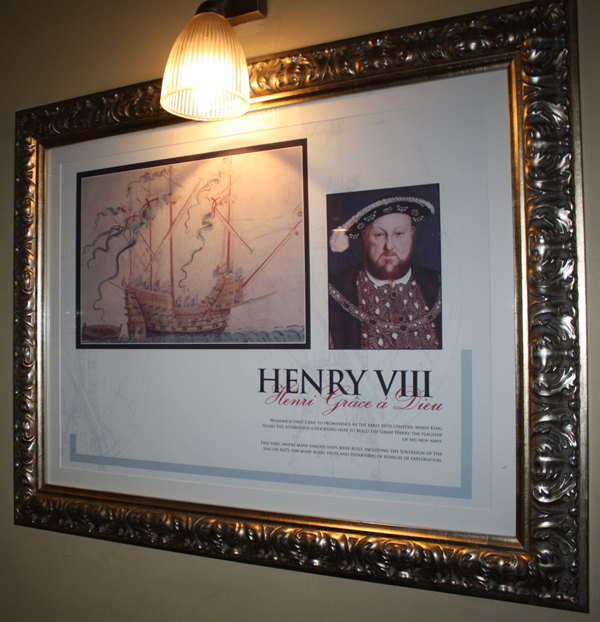
The text reads: Woolwich first came to prominence in the early 16th century, when King henry VIII established a dockyard here to build the Great Harry, the flagship of his new navy.
This yard, where many famous ships were built, including the Sovereign of the Seas (in 1637), saw many royal visits and departures of voyages or exploration.
Royal inspired photographs showing The Royal Horse Artillery.
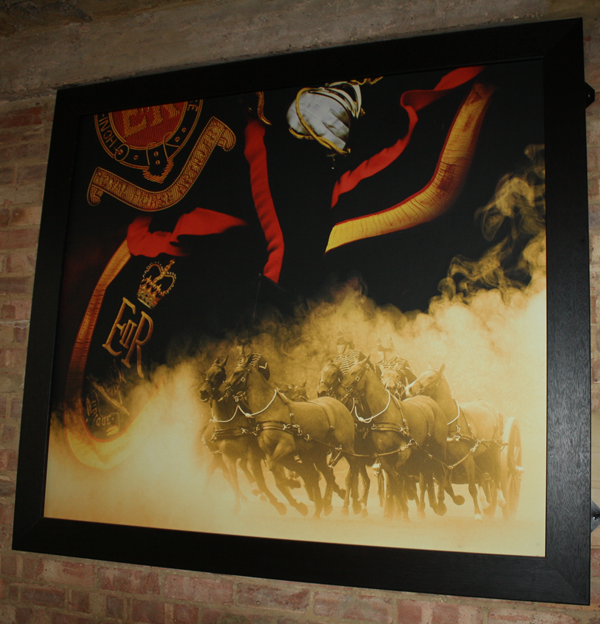
Naval inspired artwork, with reference to The Great Harry.
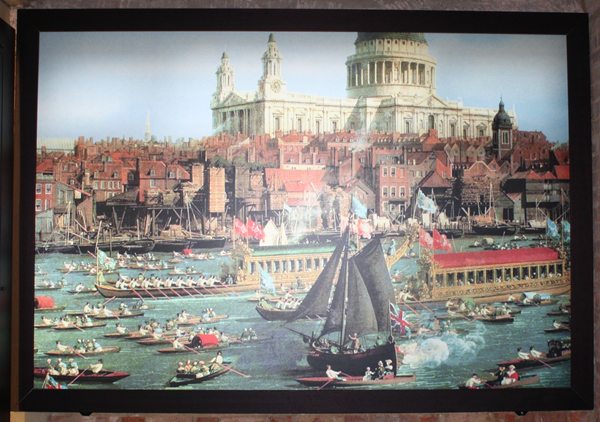
A piece of text about the R.A.C.S.
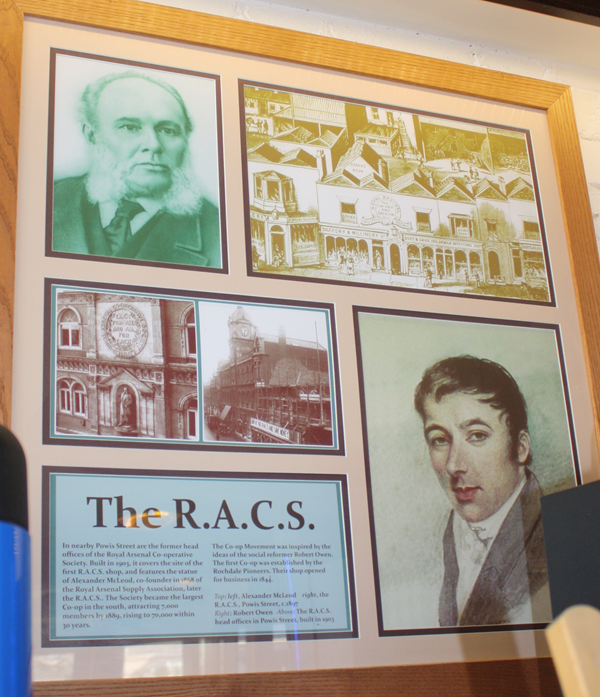
The text reads: In nearby Powis Street are the former head offices of the Royal Arsenal Co-operative Society. Built in 1903, it covers the site of the first R.A.C.S. shop, and features the statue of Alexander McLeod, co-founder in 1868 of the Royal Arsenal Supply Association, later the R.A.C.S. the Society became the largest Co-op in the south, attracting 7,000 members by 1889, rising to 70,000 within 30 years.
The Co-op Movement was inspired by the ideas of the social reformer Robert Owen. The first Co-op was established by the Rochdale Pioneers. Their shop opened for business in 1844.
Top: left, Alexander McLeod, right, the R.A.C.S., Powis Street, c.1897
Right: Robert Owen
Above: The R.A.C.S. head offices in Powis Street, built in 1903.
A piece of text about the Woolwich Granada.
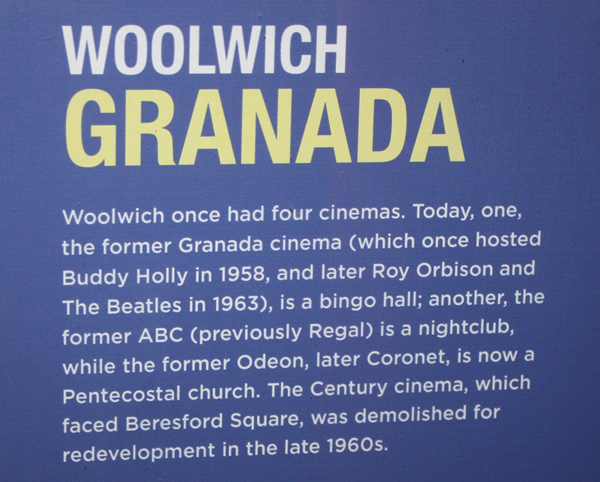
The text reads: Woolwich once had four cinemas. Today, one, the former Granada cinema (which once hosted Buddy Holly in 1958, and later Roy Orbison and The Beatles in 1963), is a bingo hall; another, the former ABC (previously Regal is a nightclub, while the former Odeon, later Coronet, is now a Pentecostal church. The Century cinema, which faced Beresford Square, was demolished for redevelopment in the late 1960s.
Framed photographs of Charlton Athletic 1921 – 1922.
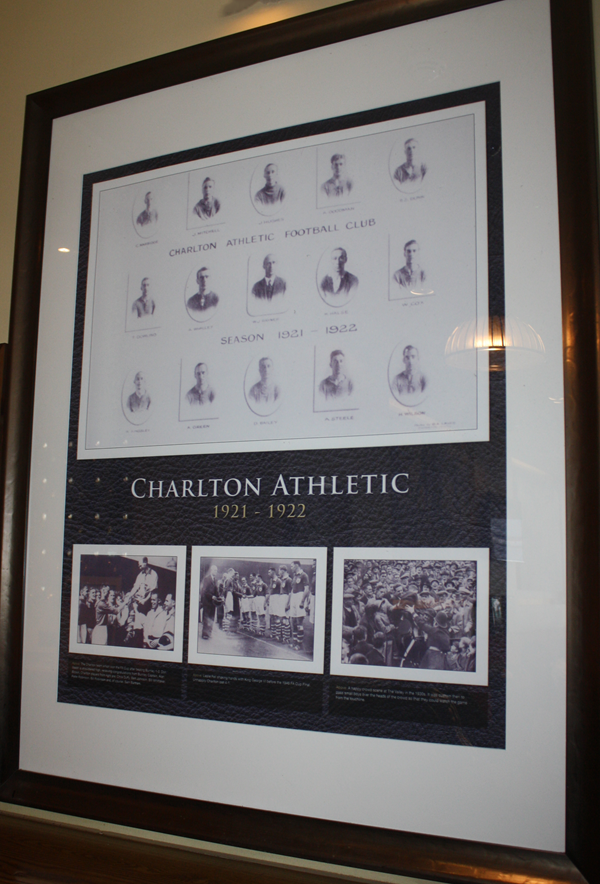
A framed photograph and text about Glen Tilbrook, of Squeeze.
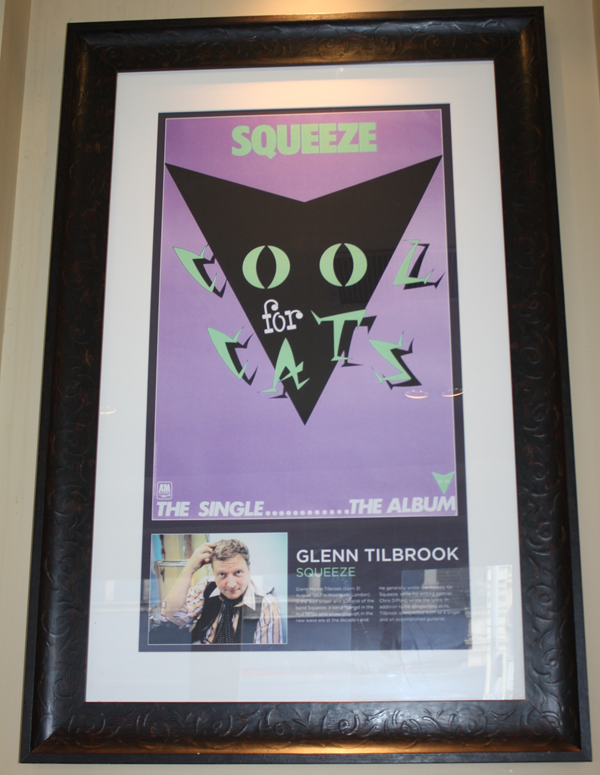
The text reads: Glenn Martin Tilbrook (born 31 August 1957 in Woolwich, London) is the lead singer and guitarist of the band Squeeze, a band formed in the mid-1970s who broke through in the new wave era at the decade's end.
He generally wrote the melody for Squeeze, while his writing partner, Chris Difford, wrote the lyrics. In addition to his song writing skills, Tilbrook is respected both as a singer and an accomplished guitarist.
Framed photographs and text about the Woolwich ferry.
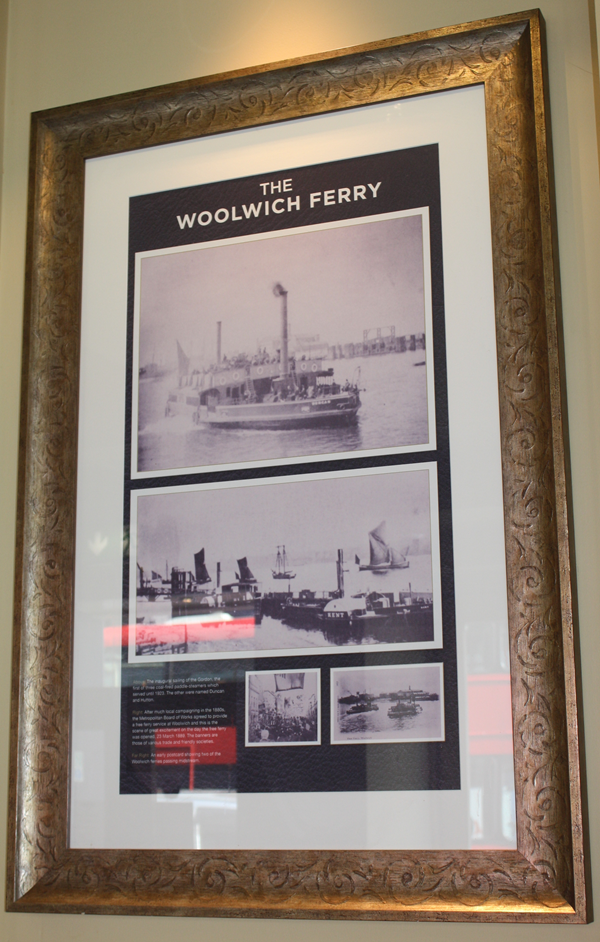
The text reads: Above: The inaugural sailing of the Gordon, the first of three coal-fired paddle-steamers which served until 1923. The others were named Duncan and Hutton.
Right: After much local campaigning in the 1880s, the Metropolitan Board of Works agreed to provide a free ferry service at Woolwich and this is the scene of great excitement on the day the free ferry was opened, 23rd March 1889. The banners are those of various trade and friendly societies.
Far right: An early postcard showing two of the Woolwich ferries passing midstream.
A framed print and text about Oswald Hope Robertson – the inventor of the blood bank.
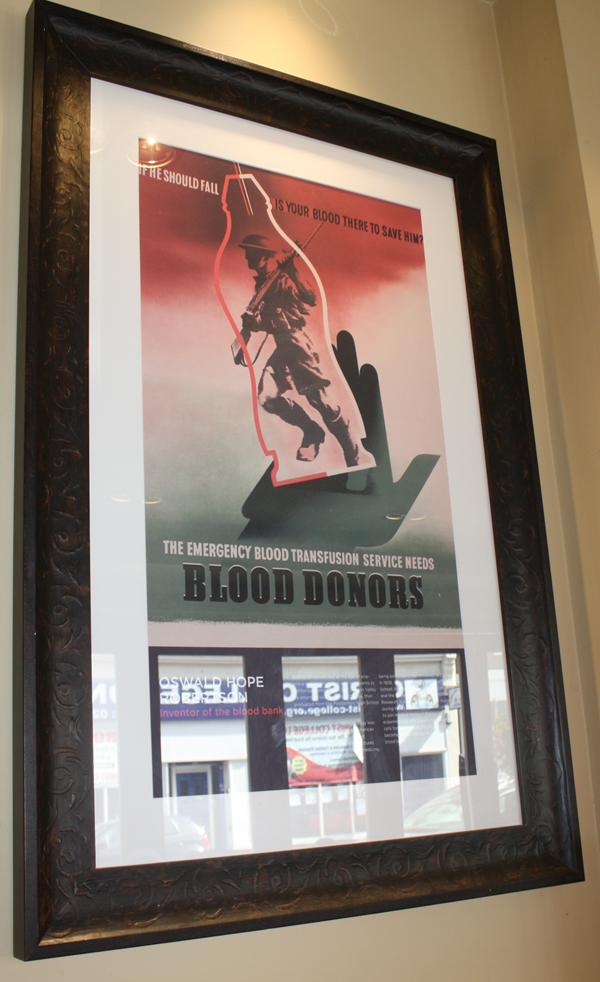
The text reads: Born in Woolwich, but at the age of one-and-a-half he emigrated with his parents to California, settling in the San Joaquin Valley. He attended local schools in Dinuba, then graduated from the Polytechnic High School in San Francisco.
His initial plan to study basic biology was changed by a meeting with an American medical student while on holiday in Germany. After attending some lectures on anatomy, he decided to study medicine, being admitted to the University of California in 1906. He later studied at Harvard Medical School, the Massachusetts General Hospital and the Rockefeller Institute for Medical Research, but had to cut short his studies during World War 1 when he was called to join medical teams in France. Here he experimented with preserving human blood cells for use in blood transfusions, and became recognised as the inventor of the blood bank.
A framed print and text about The Autostacker - opened 1961 and demolished in 1962.
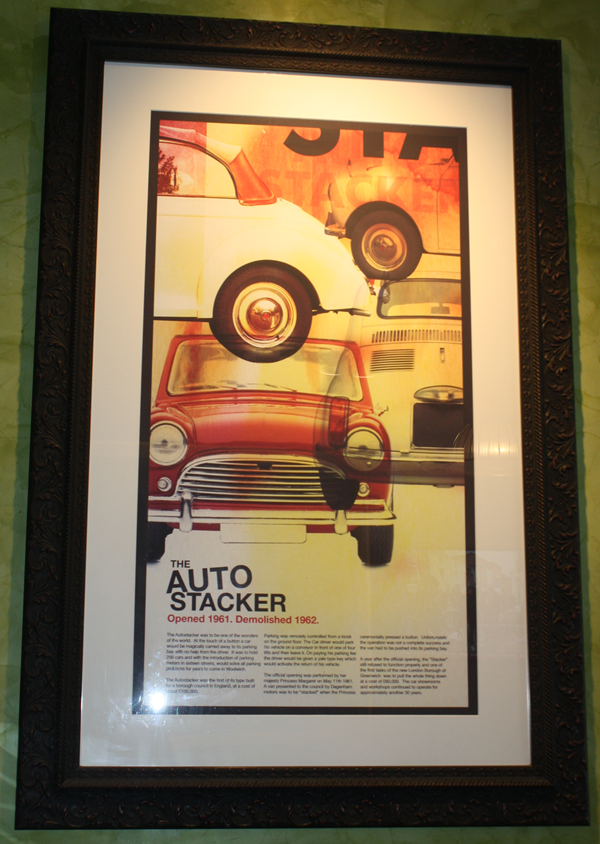
The text reads: The Autostacker was to be one of the wonders of the world. At the touch of a button a car would be magically carried away to its parking bay with no help from the driver. It was to hold 256 cars and with the introduction of parking meters in sixteen streets, would solve all parking problems for years to come in Woolwich.
The Autostacker was the first of its type built for a borough council in England, at a cost of about £100,000.
Parking was remotely controlled from a kiosk on the ground floor. The car driver would park his vehicle on a conveyor in front of one of four lifts and then leave it. On paying his parking fee the driver would be given a Yale type key which would activate the return of his vehicle.
The official opening was performed by her majesty Princess Margaret on May 11th 1961. A van presented to the council by Dagenham motors was to be “stacked” when the Princess ceremonially pressed a button. Unfortunately the operation was not a complete success and the van had to be pushed into its parking bay.
A year after the official opening, the “Stacker” still refused to function properly and one of the first tasks of the new London Borough of Greenwich was to pull the whole thing down at a cost of £60,000. The car showrooms and workshops continued to operate for approximately another 30 years.
External photograph of the building – main entrance.
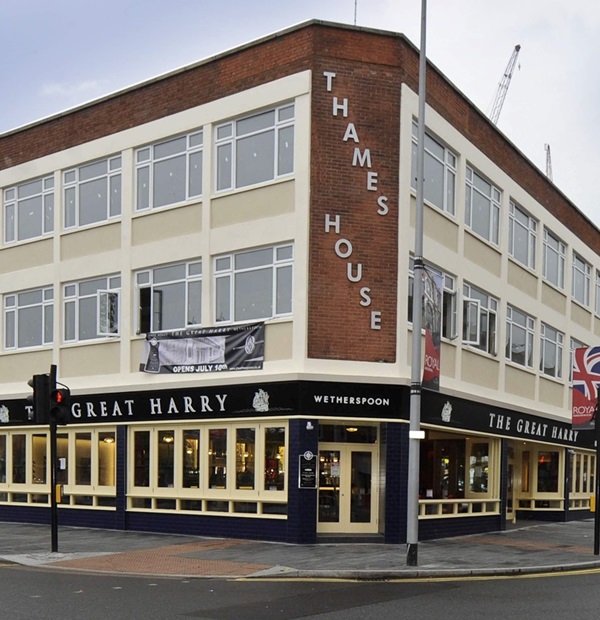
If you have information on the history of this pub, then we’d like you to share it with us. Please e-mail all information to: pubhistories@jdwetherspoon.co.uk